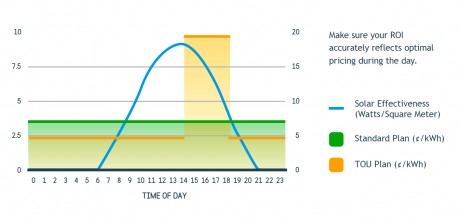Industry
Solar and Time of Use Tariffs
By Robb Miller
| Reading time 1 minute
Every time I see solar-panels littered on rooftops, I think “Now there’s someone who is choosing to make a positive impact on the world around them.”
But one thing I can’t help but wonder is: Have they optimized their affairs to take advantage of Time of Use (TOU) pricing and net-metering opportunities? The sun shines when our power demands peak. This should translate into opportunity. Depending on state-specific TOU pricing plans, feed-in restrictions, solar irradiation profile, system production and storage specifics, it should be possible to sell into the grid when prices are high, right?
In California (and other states) peak pricing overlaps with peak solar irradiance, and so the customer can really benefit and this is reflected in their power bills. But there remain complexities in state-by-state regulations and tariff plans, that still present considerable barriers to our distributed generation utopia.
What’s missing, we believe, is accurate pricing data availability (from an an easy-to-integrate RESTful API). Check out the graph below showing Georgia Power’s two residential plans:
[caption id=”attachment_269” align=”aligncenter” width=”460” caption=”Make sure your ROI analysis accurately reflects optimal pricing plans”]
The standard plan charges 7.5¢/kWh all the time, while the time-of-use plan alternates between 20¢ on-peak and 5¢ off-peak. Standard is better at first glance, but if you’ve got solar you can offset over half of your on-peak usage. Then if you add some storage, you can eliminate all the on-peak consumption and deliver a 33% decrease in electricity rates.
Creating this optimal system is dependent on granular, accurate electric price data. In another zip code, the rates and TOU time periods (and even the definition of Summer and Winter) change. That means our Georgia Power optimized system has to be reconfigured to optimize for Florida Power and Light or Southern California Edison.
That’s why we opened up our API and electricity pricing database. We make it simple for solar installers (and any other app developer) to use the most accurate energy pricing data, and integrate that data into any ROI analysis for their customers. Check it out here. You may even want to become part of the Genability Developer Network.
Also in Industry
San Francisco passes Zero Fuel, Zero Emission transportation act
By Emile Baizel | Apr 1, 2011
Controling Vampire Power to Save on Electricity Bills
By Robb Miller | Feb 27, 2011
Do the same things and still save money on electricity
By Emile Baizel | Feb 15, 2011
Translating Your Electric Bill
By John Tucker | Jan 20, 2011

